Khojaly Genocide: Salatin and Myushkyunaz
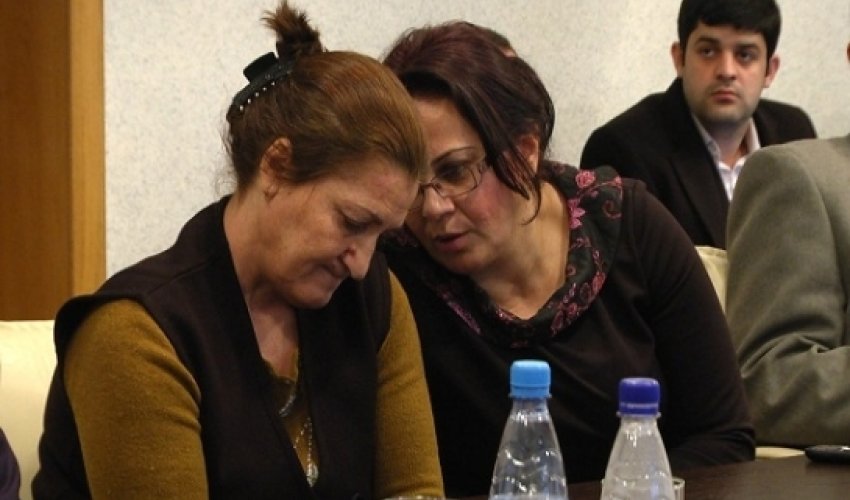
MYUSHKYUNAZ
I saw this woman ( in the foreground ) and listened to her story three days ago at the Press Council of Azerbaijan. She, Myushkyunaz Akhmedova, exactly 22 ago was less than 30 years. Together with her husband, a police officer , they lived in the Karabakh town of Khojaly . When the woman was pregnant , it was already during the Karabakh war . Her husband participated in the defense of Azerbaijani villages and once said to Myushkyunaz, "If we have a son, you call him my name , and if it's a girl - let her be Salatin , as the journalist - National Hero of Azerbaijan .
SALATIN
Salatin Asgarova journalist ( born in 1961) was a young , very active member of the Soviet newspaper Youth of Azerbaijan. Not once she was on a mission in the Nagorno- Karabakh Autonomous Region of Azerbaijan, without fear of being killed . Once she was on the verge of death - in November 1990 by car from the Russian military unit, accompanied by an officer, Salatin went to the village , most of whose inhabitants were Armenians . In rural store she was talking with residents , urging them to reconcile with Azerbaijani neighbors. But suddenly someone threw a stone, and shouting, flushing with anger and hatred Armenian militants tried to knock down the fearless journalist. Another stone hit in the head of a Russian officer. Together with the wounded officer the journalist left the village. The officer subsequently died in hospital.
After the case the newspaper persuaded her not to go to Karabakh, and not to forget that she has custody of a young son. She did not listen.
On the morning of January 9, 1991 a military vehicle, in which together with Salatin were military men from a border guard unit still stationed in Azerbaijan, Lieutenant Colonel Larionov, Major Ivanov, and Sergeant Goyek, was driving on the road Lachin - Shusha. Near the Armenian village Galaderesi they were already waited by Armenians ... who shot at them point-blank with automatic guns and sniper rifles from two directions - facing and rear, on the left side. On the car, 113 bullet holes were counted. The driver, Sgt I.Goyek was killed. He managed to brake - hit with the bullets, the car passed just one meter. Major Igor Ivanov was killed immediately. Lieutenant Colonel Oleg Larionov opened fire. He jumped out of the car, having already received five bullets , crossed the road and lay down, continuing to shoot until he ran out of bullets. Coming up, the Armenians finished him. Opening the car door, they shot the wounded Salatin Askerova at point blank range . This terrible reality shook Azerbaijan . The battalion commander, Lt. Col. Oleg Larionov was from Taishet in Siberia. More than five years he commanded a battalion that in the spring of 1990 withstood the attack of Armenians in the village Baghanis Ayrum of the Gazakh region . Over his head Armenians promised a reward of 10 thousand rubles. In some ways , January 9, 1991 was a turning point , a new point of reference time. This was not the first organized armed Armenian attacks from ambush, but it was the first murder case of a journalist on the territory of Nagorno-Karabakh in the performance of her duties (1news.az).
GENOCIDE
In the night from 25 to 26 February 1992, when the Khojaly people with a group of soldiers of the Azerbaijani army just created realized that strength is running out and they could not confront the attacks of the combined units of Armenian troops with the 366th Regiment of the USSR, they began to leave the burning town. Myushkyunaz with her wounded husband Elmar and her baby daughter Salatin in her arms, with about 200 residents at night rushed to the flood forest of the river Gargar plain. Snow was waist-deep and cold, and the little girl crying out loudly could not stop. Armed with rifles and machine guns, the Armenians fired on sounds, trying to kill all of the Khojaly people. People remained in the snow, bleeding. She could not silence the girl, then, already quite mad, she strangled the girl so that Armenians would not kill all of them.
She initially wanted to leave the baby under a tree, and others advised her to do that, but then she decided to take the body with her so that it was not eaten by animals. She tied the body to her back, and then saw the child's foot sticking out of the parcel, and closed it with a handkerchief, as if the girl was alive.
Two days people were hiding in the woods , hungry, not daring to go out to the villages . On the third day they were found by the armed Armenians and led to the village Dahraz. The men were gone and were never seen again. By this time Myushkyunaz's husband died.
Hungry, they sat locked in a shed , and suddenly her neighbor Mahira alarmed: the child was alive! It turned out that small Salatin was alive. Myushkyunaz was overjoyed , trying to nourish her baby, but she did not have enough milk as she had not eaten for three days. Aunt Mahira found some wheat grains in the barn and taught the young mother to chew the grains and put them in the child's mouth .
On the fourth day the women prisoners were exchanged and given to the Azerbaijani side. They were brought to the village Gulabli, and then to the Agdam hospital. The doctors decided to rush the woman and the child to Baku , to avoid having to amputate her feet blackened from the cold. Myushkyunaz and little Salatin were saved.
Salatin now is 23 years old and she,lives with her mother in Baku. In an interview with Myushkyunaz the girl was not involved.
The history of each of the Khojaly families is told in the book Martyrs and Witnesses by Hawwa Mammadova, Baku -2004 (http://www.anl.az/el/m/xocali_ru.pdf). the history of Myushkyunaz is on p.86.
The picture was taken by a Muscovite Victoria Ivleva in Khojaly, the day after the genocide. She went into the city together with the Armenian regiment. In the background is seen the car of a marauder who appropriated the property of the killed Azerbaijanis.
The Khojaly massacre became the most massive, according to Human Rights Watch, and the most severe, according to a British explorer Tom de Waal, bloodshed in the Karabakh events .
In Khojaly:
Killed were 613 people, including children - 63 , women - 106 and seniors - 70;
Eight families were completely annihilated;
25 children lost both parents;
130 children lost one parent;
Wounded were 487 people, including children - 76;
People held hostage were 1,275;
150 people were lost.
Enormous damage was caused to the state and personal property valued at 5 billion rubles (in prices on 01.04.92) .
(http://www.azeri.ru/az/karabakh/genocid_v_khojaly/).
After the shameful participation of the 366th regiment of the Soviet Army in the Khojaly genocide, by the decision of the Minister of Defense of Russia, the regiment was removed to Georgia and there disbanded. One of the officers of this regiment was Seyran Ohanyan - now the Minister of Defense of Armenia.
REPORT FROM RUSSIAN HRC Memorial
Once the town was occupied by Armenian armed forces, there were about 300 civilians , including 86 Meskhetian Turks .
According to the testimony of residents, participants of the storm , officials and representatives of the NKR media who were at that time in the area of Khojaly, the remaining residents were captured and delivered within three days to Stepanakert and held in prison there, in Krasnoye Selo and Askeran. Some of them, by the decision of the NKR leaders, were taken into private homes of the Armenian families, whose relatives were detained on the territory of Azerbaijan.
At the request of officials of the NK, all the women and children were passed to the Azerbaijani side freely in a week.
According to information received from both sides, by 03/28/92 , the Azerbaijani side was handed over 700 Khojaly residents detained in the town and on the way to Aghdam. The bulk of them were women and children.
However, there are indications of Khojaly residents, women and children, as well as men, detained as a "material exchange." These indications are confirmed by personal observations of Memorial: by 13.03 in Askeran there still were Khojaly hostages, including women and young girls. There is good evidence that women were forcibly held in Askeran also after this date.
When observers from Memorial viewed the temporary detention center in Stepanakert, which contained prisoners captured in Khojaly and Azerbaijani armed force members (all of them in the conflict zone were defined as "hostages"), it was found that the conditions of their detention were extremely unsatisfactory. The appearance of the contained Azerbaijanis testified that they were getting extremely poor nutrition and they had clear signs of exhaustion. Verbal information was received that the prisoners were beaten regularly. It should also be noted that the observers were given the opportunity to explore a number of prisoners.
The head of the prison Major Khachaturian banned talks with prisoners alone even for a few minutes. Only by chance we managed to hold a conversation of the kind.
According to the testimony of the exchanged Khojaly prisoners, the men were beaten. Most indications pointed out that women and children, unlike men, were not beaten. However, there are indications confirmed by doctors in Agdam and Baku, of rapes, including rapes of the minors.
2014
Azerbaijan's Military Prosecutor decided to prosecute 39 people guilty of the Khojaly genocide. This was said on Monday by the military prosecutor of Azerbaijan, Deputy Attorney General Khanlar Veliyev during a speech at an international conference devoted to the 22nd anniversary of the Khojaly genocide.
According to him, among these individuals there are not only Armenians but also the soldiers of the 366th Regiment of the Army of the former USSR.
Veliyev added that since 1988 in connection with genocide, crimes and deportation implemented by the Armenian Armed Forces against Azerbaijan, the Prosecutor's Office investigation is underway in three directions. The first direction is related to the crimes committed against the Azerbaijani people in Khojaly, Meshali, Garadagly and other localities, the second is related to the crimes committed by Armenians in vehicles, including the subway and other places, and the third is related to offenses made to prisoners and hostages, Trend reported.
Until now, 2,089 people have been revealed as perpetrators of these crimes.
The Khojaly events were recognized as genocide by parliaments and senates of several nations and states in the U.S. February 18-19 in Tehran, at the ninth session of the Parliamentary Union of the Organization of Islamic Cooperation (OIC ) with the participation of delegations from 53 countries the Khojaly tragedy was once again rated as "an act of genocide and a crime against humanity."
Diplomatic efforts and the efforts of the Azerbaijani Diaspora in the world to spread the truth about the atrocities of the Armenian separatists in Azerbaijan continue.
The Armenian side is trying to counter the truth about the Khojaly genocide, and is rigging and substituting facts, such as video conversation with the civilian prisoners trapped in Armenia and statements by the ex-president Ayaz Mutallibov and the journalist Eynullah Fatullayev, which have been repeatedly refuted by them. But this year in the Armenian society started a healthy process of rethinking its history. In the American and Armenian press an article was published by the former presidential adviser of Armenia Zh. Liparityan, who recognized the killings of Azerbaijani civilians by the Armenian military in Karabakh.
Kamal Ali
ANN.Az
Latest news 
More news 

























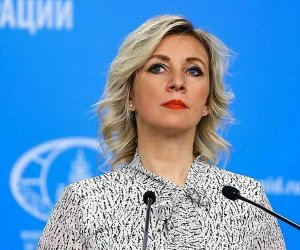
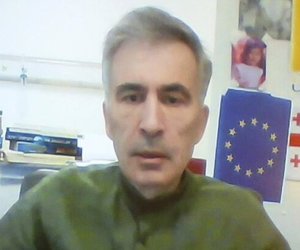
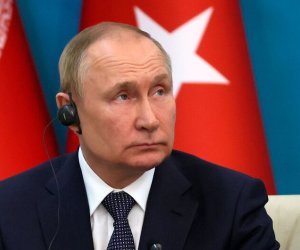


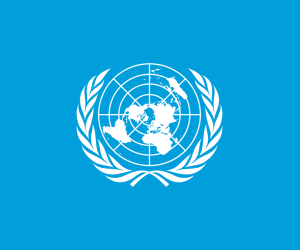

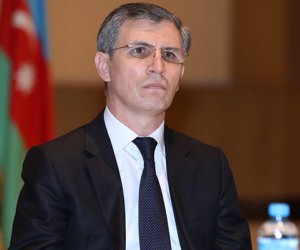


 Photo
Photo 


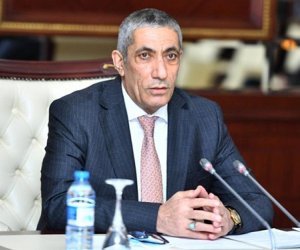
 Video
Video 

